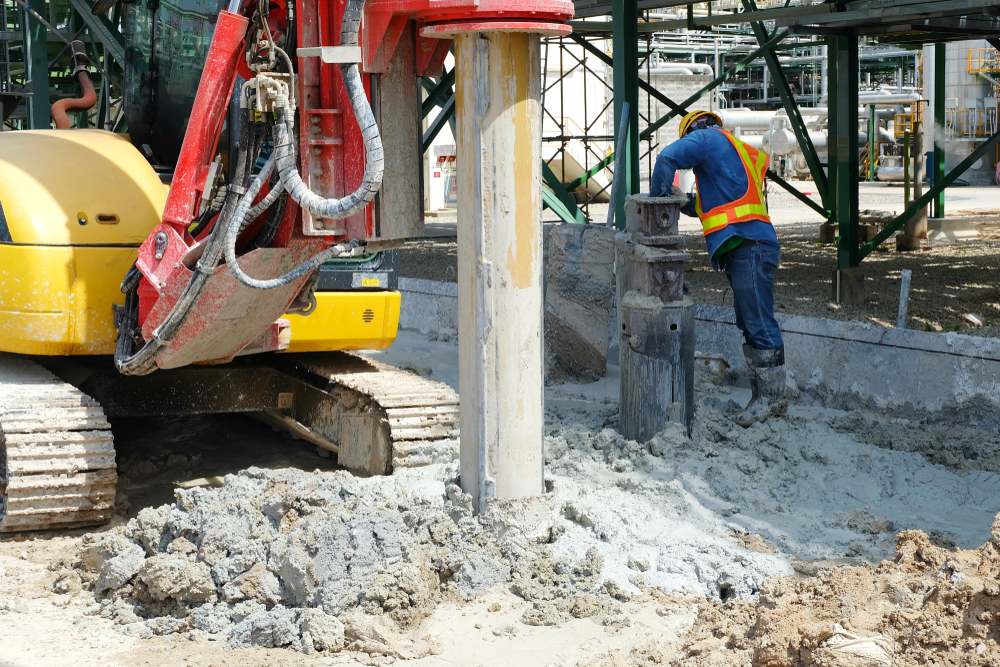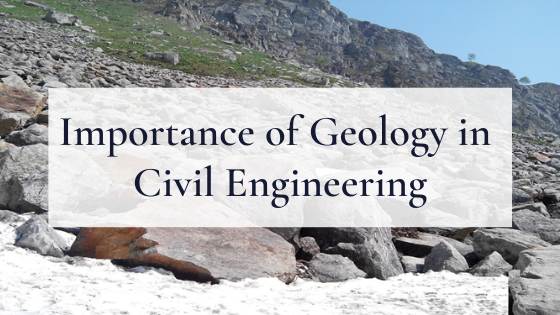Excitement About Geotechnical Engineering For Construction Projects
Table of ContentsThe 7-Minute Rule for Geotechnical Engineering For Construction ProjectsThe smart Trick of Geotechnical Engineering For Construction Projects That Nobody is Talking AboutThe smart Trick of Geotechnical Engineering For Construction Projects That Nobody is DiscussingGet This Report on Geotechnical Engineering For Construction ProjectsOur Geotechnical Engineering For Construction Projects Ideas
Consequently, during the examination, it is essential to pierce at the called for deepness and the required number of openings as per the referral of the Canadian Foundation Layout requirement. Often, the proprietor may conserve some Geotechnical Investigation cost yet wind up spending greater than the prepared for throughout the building and construction price.The responsibilities of the geotechnical expert include providing product testing for building and construction assistance. Geotechnical Engineering for Construction Projects. Geotechnical designers evaluate all the area test reports to make certain that construction is going on as per the task requirements. During building and construction, a confirmatory examination for dirt compaction is done on-site to make certain that no future settlement happens
After the concrete is put -7 days and 28 days- tests are performed on concrete examples gathered from the website to guarantee that the concrete poured fulfills the design standard. Asphalt core is taken after the Asphalt is laid and compacted to validate that it satisfies the style criterion. All laboratory test reports are evaluated by the Geotechnical Designer to guarantee that it fulfills the job requirements.
An Unbiased View of Geotechnical Engineering For Construction Projects
Geotechnical engineering plays an important duty in making sure the stability of building and construction projects. Geotechnical engineering is a crucial branch of civil design that concentrates on understanding the behaviour of earth products, such as dirt and rock.

For a dependable structure and a smooth construction process, depend give the know-how you require. Contact to obtain expert guidance and geotechnical solutions tailored to your next project.
What Does Geotechnical Engineering For Construction Projects Mean?
When starting a land growth project, comprehending the ground beneath your feet is as vital as the structures you plan to build over it. Our Geotechnical Design group analyse the ground, ensuring it appropriates for the recommended advancement while offering you with the info needed to satisfy your job objectives.
Geotechnical Design takes a look at the formation of the ground, as it is the structure blocks for all jobs. Where structures need to be created with regard to the ground conditions; ground conditions (e.g., soft ground) might call for enhancing depending on the dimension of the desired framework. Prior to structure, you need to learn about the groundwater, soil structure, and liquefaction possibility of your land.
For sites that are not attached on the regional authority infrastructure extra site investigations would certainly be required to provide technological inputs for on-site stormwater and wastewater. We have experienced Geotechnical Engineers based in each workplace, supporting your geotechnical needs across the country. Get to out to us to talk about just how we can support your following job.
These reports are tailored to satisfy the certain demands of a task and include design criteria and guidance for the building and construction of a range of synthetic structures. As supplying consultancy services covering areas such as slope security and load-bearing capabilities for different materials, these engineers undertake study and advancement tasks to boost methods, tools, materials knowledge and analysis covering whole lifecycles.
All about Geotechnical Engineering For Construction Projects

Rates of pay normally raise as your understanding and abilities expand, with guidelines aiming to a graduate starting salary of in between 18,000 and 28,000 per year in the UK. This climbs to 26,000 to 36,000 with a few years of experience and afterwards reaching 40,000 to 60,000+ for elderly, chartered or master designers.
With the right application it is possible to grasp the occupation and gain entry to a tough yet fulfilling and important profession. A geologist would certainly need to retrain to come to be a geotechnical designer, although there is plenty of cross-over in between both occupations, which could make this less complicated - Geotechnical Engineering for Construction Projects. Geologists need to have an understanding of dirts, rocks and various other products from a scientific viewpoint, while geotechnical engineers story their knowledge of issues such as soil and rock technician, geophysics and hydrology and use them to engineering and ecological jobs
When beginning, these designers will often tend to work on less complicated tasks, developing knowledge and experience all set for even more challenging job later. Geotechnical designers have a tendency to specialise in specific locations as they expand in experience, focusing on particular frameworks such as railways, roads or water. These designers also collaborate with renewable power, offshore and onshore oil and gas, nuclear power, and much more.
The Facts About Geotechnical Engineering For Construction Projects Uncovered
The time required to end up being a geotechnical designer depends on where you are based, where you research and what level of education you want to achieve prior to getting in the work environment. Are you going to check out an apprenticeship, take an university level or service in the direction of a Master's or PhD? Generally-speaking it takes 3-4 years to reach the standard demands to begin a career as a geotechnical engineer.
These procedures enable professionals to assess a host of soil technicians consisting of weight, porosity, void-to-solid bit proportion, permeability, compressibility, optimum shear stamina, bearing capability and deformations. If the structure requires a deep structure, designers will certainly use a cone penetration test to approximate the amount of skin and end bearing resistance in the subsurface.
When analyzing an incline's equilibrium of shear tension and shear toughness, or its ability to stand up to and undergo motion, find more information rotational slides and translational slides are frequently taken into consideration. Rotational slides stop working along a rounded surface area, with translational slides happening on a planar surface. A specialist's objective is to determine the conditions at which a slope failure could occur.
Frequently, searchings for recommend that a website's dirt ought to be dealt with to boost its shear toughness, tightness and permeability prior to style and building. When it comes time to set out foundation strategies, experts are progressively concentrated on sustainability, even more particularly exactly how to reduce a foundation's carbon footprint. One method has actually been to change 20 percent of a foundation's concrete with fly ash, a waste product from coal fire nuclear power plant.